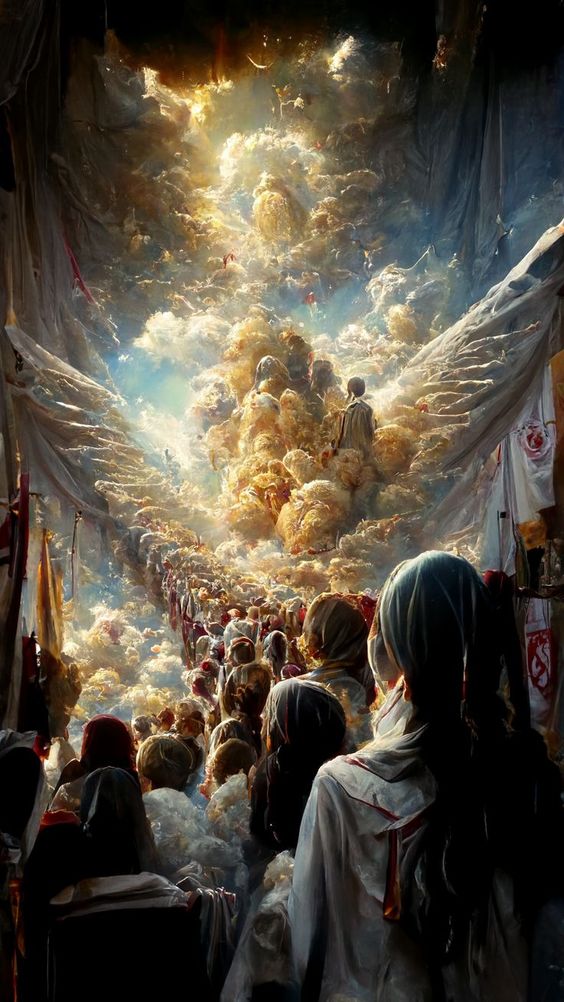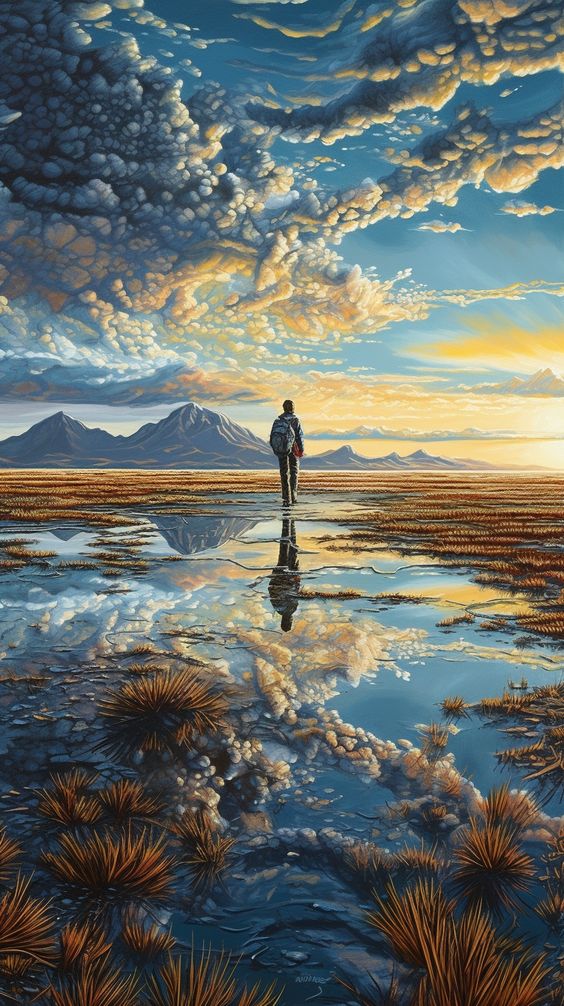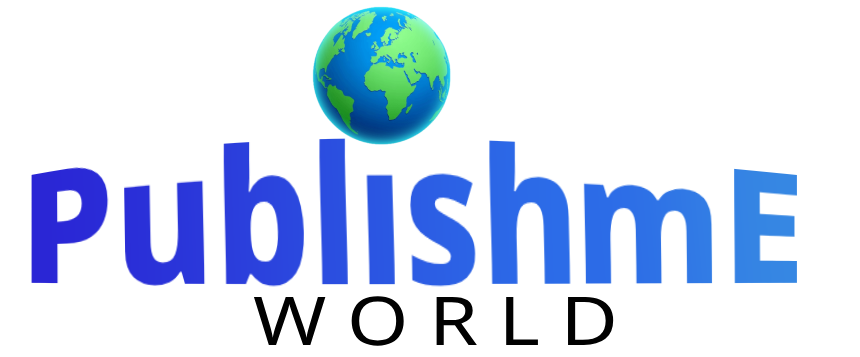Text-to-Image AI:
Text-to-Image AI refers to a technology that generates images from textual descriptions. It’s a subset of generative artificial intelligence (AI) that aims to bridge the gap between natural language and visual content creation. This technology holds significant potential for various applications, including creative content generation, design assistance, virtual world creation, and more.

How It Works:
Text-to-Image AI models are typically based on deep learning architectures, often utilizing techniques like Generative Adversarial Networks (GANs) or Variational Autoencoders (VAEs). Here’s a simplified explanation of how these models work:
- Training Data: The model is trained on a large dataset containing pairs of textual descriptions and corresponding images. For instance, the dataset might have sentences like “a red apple on a wooden table” paired with images that depict this description.
- Encoding Text: The textual description is processed through a neural network to create a feature representation of the text. This representation captures the essential information about the description.
- Generating Images: The model takes the encoded text representation and generates an image that corresponds to the given description. This is achieved through a generator network that learns to create images that match the text features.
- Adversarial Feedback (for GANs): In GAN-based models, there’s a discriminator network that evaluates the generated image’s realism. The generator aims to improve its output by receiving feedback from the discriminator. This adversarial process helps the generator refine its image generation over time.
- Fine-Tuning and Optimization: The entire model is fine-tuned using backpropagation and gradient descent to minimize the difference between the generated image and the real image associated with the text description.

Types of Text-to-Image AI Models:
- Conditional GANs (cGANs): These models use a GAN architecture where the generator takes both random noise and a textual description as input. The generator is conditioned on the text, which helps in generating more contextually relevant images.
- Stacked GANs: These models involve multiple GANs working together to generate images. One GAN might generate a rough outline, while the other adds more details. This hierarchical approach leads to progressively refined images.
- AttnGAN: Attention Generative Adversarial Network (AttnGAN) integrates attention mechanisms to focus on specific parts of the text during the image generation process, resulting in more detailed and accurate images.

Benefits of Using Text-to-Image AI:
- Creative Content Generation: Text-to-Image AI enables artists, designers, and content creators to quickly generate visuals based on textual concepts, helping streamline the creative process.
- Virtual World Creation: In gaming and virtual reality, this technology can automatically create diverse landscapes, characters, and objects based on textual descriptions, enhancing world-building.
- Design Assistance: Professionals in industries such as architecture and fashion can benefit from quick visualizations of their ideas from text, aiding in communication and decision-making.
- Data Augmentation: Researchers and developers can utilize text-to-image models to augment training data for various tasks, boosting the performance of other computer vision models.
- Storytelling and Education: Authors, educators, and multimedia creators can use this technology to visualize scenes from their narratives or educational materials, enhancing engagement.
- Accessibility: Text-to-Image AI can make visual content accessible to people who are visually impaired by providing detailed textual descriptions of images.
- Rapid Prototyping: For product development, prototypes can be quickly visualized and iterated upon using textual descriptions, saving time and resources.
In essence, text-to-image AI models hold the potential to revolutionize how we create and interact with visual content, making the fusion of language and imagery more seamless and versatile.

Changing the Way We Think About Creativity:
Text-to-Image AI is reshaping our perspective on creativity by demonstrating that creativity isn’t solely limited to human imagination and artistic skill. It challenges the notion that creativity is an exclusively human trait, showing that machines can also contribute significantly to the creative process. This shift prompts us to view creativity as a collaborative effort between human creativity and AI-enabled creativity.
Democratizing Creativity:
Traditionally, creating visually appealing images required artistic expertise, which excluded those without artistic skills from participating in certain creative endeavors. Text-to-Image AI democratizes creativity by enabling anyone, regardless of their artistic abilities, to generate images based on textual descriptions. This accessibility empowers individuals who might not possess traditional art skills but have unique ideas to bring to life. It levels the playing field and opens up new avenues for self-expression and creative exploration.
Expanding Creative Possibilities:

Text-to-Image AI unlocks creative possibilities that were previously unattainable due to the limitations of human skills and imagination. It allows us to create images that are beyond the scope of what we could produce by hand. Abstract and surreal concepts, fantastical landscapes, and intricate details can be effortlessly generated, stretching the boundaries of what is visually conceivable. This technology encourages us to explore unconventional ideas and imagine worlds that were once reserved for the realm of dreams.
Challenging Traditional Understanding of Creativity:
The integration of AI into the creative process blurs the lines between human creativity and machine intelligence. It challenges our conventional understanding of creativity as a purely human endeavor by introducing a new collaborative dimension. This challenges us to rethink the essence of creativity itself: Is creativity defined by the source of ideas, the execution, or the ability to innovate? The emergence of AI-generated content sparks conversations about authorship, originality, and the evolving nature of art in the digital age.
Hybrid Creativity and Co-Creation:
Text-to-Image AI fosters a hybrid form of creativity where humans and machines co-create. Instead of viewing AI as a replacement for human creativity, it becomes a tool that complements and amplifies our imaginative capacities. This collaboration encourages us to experiment with different ways of working, from providing AI-generated starting points for further human refinement to directly integrating AI-generated elements into larger creative projects.

Ethical Considerations and New Frontiers:
As text-to-image AI advances, it raises ethical questions about the nature of creativity, intellectual property, and authenticity. How do we attribute creativity in a world where AI plays a role in content generation? Furthermore, the evolving landscape of AI-generated content might inspire entirely new forms of art, leading to the emergence of AI-influenced art genres that challenge conventional definitions.
In summary, text-to-image AI is reshaping our understanding of creativity by democratizing access to visual expression, expanding creative horizons, and prompting us to reconsider the interplay between human and machine creativity. It’s a dynamic force that invites us to explore the uncharted territories of collaboration and innovation, while also inviting reflection on the essence of creativity in a technologically driven world.

Challenges and Limitations of Text-to-Image AI:
While text-to-image AI has made significant strides, it still faces several challenges and limitations that impact its effectiveness and ethical considerations:
1. Training Data and Diversity:
- Need for Large Datasets: Text-to-image models require large and diverse datasets containing paired text-image examples for training. Acquiring and curating such datasets can be time-consuming and resource-intensive.
- Lack of Diversity: Biases can emerge if training data is not diverse enough, leading to the generation of images that are representative of the dataset’s biases.
2. Quality of Generated Images:
- Realism and Details: Text-to-image models often struggle to produce images with a high level of realism and intricate details. Generated images might lack the subtle nuances and fine details that human artists can capture.
- Coherence and Consistency: Maintaining coherence and consistency across complex scenes, especially when multiple objects are described in the text, can be challenging for the model.

3. Creative Interpretation:
- Abstract Concepts: Textual descriptions of abstract or metaphorical concepts may be difficult for models to interpret accurately and translate into concrete visual representations.
- Unpredictable Outputs: Models can produce unexpected or nonsensical images if the input description is ambiguous or open to multiple interpretations.
4. Bias and Ethical Concerns:
- Bias in Training Data: If training data contains biases present in society, the model can inadvertently generate biased images that perpetuate stereotypes or discriminatory content.
- Filtering Biases: Ensuring that generated images do not perpetuate harmful biases requires careful monitoring, curation, and mitigation techniques.
- Ethical Dilemmas: AI-generated content can raise ethical questions about authorship, intellectual property, and authenticity, as well as the role of AI in creative processes.

5. Lack of Contextual Understanding:
- Semantic Understanding: Models might struggle to fully grasp the nuanced meanings and context of the input text, leading to inaccuracies in image generation.
- Common Sense Knowledge: Understanding common sense knowledge and contextual cues present in the text can be difficult for AI models.
6. Scalability and Computational Resources:
- High Computational Costs: Training and running text-to-image models can be computationally intensive, requiring substantial resources and infrastructure.
- Scalability: Generating high-quality images at scale can be challenging due to these computational demands.

7. Unpredictability:
- Lack of Control: Users might find it challenging to predict or control the exact output of the model, which can be problematic when specific visual outcomes are required.
8. Technical Constraints:
- Resolution and Complexity: Generating high-resolution and complex images remains a technical challenge due to memory and computational constraints.
In conclusion, while text-to-image AI holds promise for revolutionizing creativity and content generation, it faces a range of challenges and limitations that need to be addressed. Overcoming these challenges requires advancements in training techniques, dataset curation, ethical considerations, and a deeper understanding of the complex interplay between language and visual representation.
Key Points:
In this blog post, we explored the transformative impact of Text-to-Image AI, a technology that generates images from textual descriptions. We delved into its mechanics, including the utilization of GANs and VAEs, and discussed various model types like cGANs and AttnGAN. The benefits of Text-to-Image AI are vast, from democratizing creativity to aiding design, education, and storytelling. It also challenges traditional notions of creativity by blurring lines between human artistry and machine intelligence.

Future of Text-to-Image AI:
Looking ahead, the future of Text-to-Image AI appears promising. As technology evolves, we can anticipate more sophisticated models capable of generating even more realistic and intricate images. Improved training techniques and larger, diverse datasets will likely mitigate biases and enhance the quality of outputs. Additionally, collaborations between humans and AI may lead to entirely new genres of creative content, pushing the boundaries of visual expression.

Embrace the Possibilities:
As we stand at the intersection of language and imagery, it’s an opportune moment to explore the immense possibilities of Text-to-Image AI. Whether you’re an artist seeking inspiration, a content creator aiming to simplify visual storytelling, or someone who simply wants to experiment with a novel creative tool, Text-to-Image AI has something to offer. Its accessibility empowers both seasoned creators and those without traditional artistic skills to bring their ideas to life. By embracing this technology, you can unlock new dimensions of creativity and participate in the ongoing evolution of the artistic landscape.
In this era of AI-driven innovation, we encourage you to engage with Text-to-Image AI and witness firsthand the way it’s reshaping creativity, fostering collaboration between human imagination and machine ingenuity. The possibilities are vast, the boundaries are expanding, and the creative journey is more exciting than ever before.




